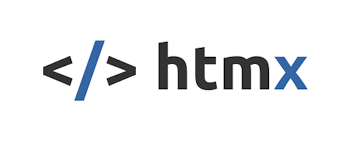
From Complex Frameworks to htmx: The Evolution of Web Development
Embracing htmx: The Future of Web Development
If you’ve been keeping an eye on web development trends, you might have heard a buzz about htmx. It’s not just another complex technology, but a game-changer that’s simplifying how we build dynamic and interactive websites. Let’s dive into what htmx is and why it’s reshaping the landscape.
The Era of htmx: Leaving Complex Front-Ends Behind
Traditionally, web developers relied on JavaScript frameworks and libraries to create dynamic web applications. These tools brought a world of possibilities, but they also introduced complexity and a steep learning curve.
Enter htmx. This innovative approach embraces simplicity. It leverages the existing technologies of HTML, CSS, and JavaScript, allowing developers to enhance user experiences without the need for heavy front-end frameworks.
htmx Decoded: HTML + XMLHttpRequest
At its core, htmx combines two familiar technologies: HTML and XMLHttpRequest (XHR).
HTML: The language that structures the content of web pages. It defines what you see on a website, including text, images, buttons, and forms.
XMLHttpRequest: This is a technology that allows a web page to make requests to a server and update parts of the page with new data, without needing to refresh the entire page.
By seamlessly integrating these technologies, htmx enables developers to create dynamic, interactive web applications with minimal effort.
The Power of Dynamic Updates
Imagine browsing an e-commerce site where product filters instantly update as you select different options. With htmx, this level of interactivity is a breeze to implement. It allows you to fetch and update data on your page without the need for complex JavaScript code.
Progressive Enhancement: A Key Philosophy
One of the most compelling aspects of htmx is its philosophy of progressive enhancement. This means that websites built with htmx remain functional even if JavaScript is disabled. This is a game-changer for accessibility and SEO, as search engines and users with disabilities can still access and navigate your content seamlessly.
Lightweight and Fast
Unlike traditional JavaScript frameworks, htmx is incredibly lightweight. This means faster load times and smoother user experiences. By leveraging the power of modern browsers, htmx brings a new level of efficiency to web development.
Future-Proofing Your Web Projects
As the web landscape evolves, htmx provides a forward-looking approach. It allows you to build robust, interactive websites without being tied to a specific framework. This flexibility ensures your projects stay relevant and adaptable to emerging technologies.
Embracing the htmx Revolution at Wally’s Web
At Wally’s Web, we’re not just keeping up with trends; we’re at the forefront of shaping them. With htmx, we’re revolutionizing web development, creating faster, more accessible, and user-friendly websites.
Say goodbye to complex front-end frameworks and embrace the simplicity and power of htmx. It’s not just a technology; it’s a paradigm shift in how we approach web development.
Stay tuned for more insights and updates as we continue to pioneer the future of web development!

